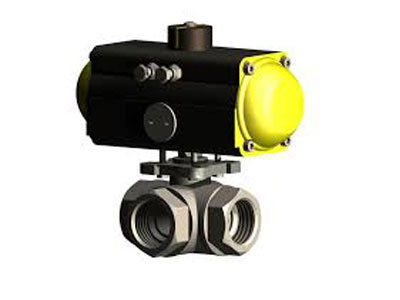What Is The Principle Of Solenoid Valve?
Key Takeaway
The principle of a solenoid valve relies on electromagnetism to control fluid flow. When an electrical current passes through the solenoid coil, it creates a magnetic field that attracts or repels a plunger or armature. This movement either opens or closes an orifice, regulating the flow of liquids or gases through the valve.
In a typical solenoid valve, the energized solenoid overcomes the spring tension, causing the plunger to move. When de-energized, the magnetic field collapses, and the spring returns the plunger to its original position, either opening or closing the valve. This mechanism enables solenoid valves to function as automatic flow regulators in various applications.
Electromagnetic Principles Underpinning Solenoid Valves
The core principle behind solenoid valves is electromagnetic actuation. When an electric current passes through the solenoid’s coil, it generates a magnetic field. This magnetic field attracts or repels a plunger or armature, causing the valve to open or close. The solenoid’s operation is based on the interaction between electric current and magnetic fields, fundamental to its precise control of fluid or gas flow.
The solenoid’s ability to control the flow is directly tied to the strength and direction of the magnetic field created by the electric current. This allows solenoid valves to provide rapid, reliable control in various industrial and mechanical systems.

Conversion of Electrical Energy to Mechanical Motion
Solenoid valves convert electrical energy into mechanical motion through the interaction of the magnetic field and the valve’s plunger or actuator. When an electrical signal energizes the coil, the resulting magnetic field moves the plunger. This movement either opens or closes the valve, regulating the flow of fluids or gases.
This energy conversion process is highly efficient and can respond instantly to electrical signals, making solenoid valves ideal for systems that require fast and precise control, such as in pneumatic or hydraulic applications.
Role of Magnetic Coils and Plungers in Valve Function
In solenoid valves, the magnetic coil and plunger play crucial roles in valve function. The coil, made of copper wire, generates the magnetic field when energized. The plunger, typically made of ferromagnetic material, is attracted to or repelled by the magnetic field, creating the mechanical movement that operates the valve.
The plunger’s motion directly controls the opening or closing of the valve, which regulates fluid or gas flow. The materials and design of both the coil and plunger are optimized to ensure reliable, quick, and precise valve actuation in various environments.
Dynamic Flow Control Based on Electromagnetic Actuation
The solenoid valve’s primary role is dynamic flow control, and this is achieved through electromagnetic actuation. When the solenoid is energized, the magnetic field generated by the coil acts on the plunger, causing it to move. This movement alters the valve’s position, either allowing or stopping the flow of fluids or gases.
By adjusting the electrical signal sent to the solenoid, the flow rate can be controlled dynamically. This makes solenoid valves ideal for applications that require variable flow control, such as in automated machinery, HVAC systems, and fluid processing systems.
Key Factors Affecting Solenoid Valve Efficiency
Several factors affect the efficiency and performance of a solenoid valve. These include the coil resistance, the material of the coil and plunger, and the operating voltage. A higher coil resistance can lead to energy loss, reducing efficiency. The material of the plunger (e.g., ferromagnetic materials like iron) affects the strength of the magnetic field, thus influencing the speed and precision of valve movement.
Additionally, the valve design, including the spring return mechanism and seal quality, also impacts performance. Proper maintenance and correct system integration help in optimizing solenoid valve efficiency, ensuring consistent, reliable operation across different applications.
Conclusion
Understanding the principle of solenoid valves—how electrical energy is converted to mechanical motion through electromagnetic actuation—allows for efficient integration into various systems. The combination of coils, plungers, and dynamic control based on electromagnetic fields provides precise, reliable flow regulation. By considering the factors affecting efficiency, engineers can design and maintain solenoid valve systems that perform optimally, making them an essential component in industries ranging from automation to fluid control.
